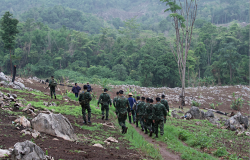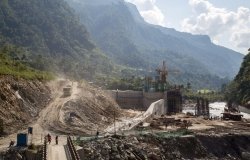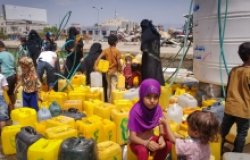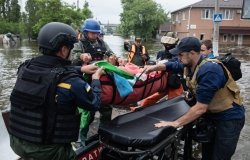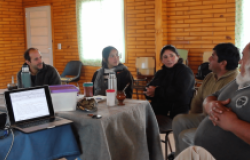Improving Water Access and Sanitation Around the Globe
The Environmental Change and Security Program's Karin Bencala highlights a new ECSP publication that delves into efforts to help solve the global water crisis.
Water is a basic requirement for human survival; yet more than a billion people lack adequate access to drinking water, commonly defined as 20 liters per day per person available within a reasonable distance from their homes. They struggle every day to meet their needs—a burden primarily borne by women and children whose quest to collect water often prevents them from attending school and often places them in danger as they travel alone.
A new publication from The Environmental Change and Security Program's Navigating Peace Initiative, Water Stories: Expanding Opportunities for Small-Scale Water and Sanitation Projects, goes beyond the technical aspects of improving water supply and sanitation to explore what makes a project effective and sustainable. As John Oldfield notes in his article, "breakthrough practices in [the sector] are rarely new technological solutions," but are instead those that innovatively and cooperatively apply current technology to meet local needs.
Another article highlights the work of Population Services International (PSI), a social marketing NGO, as a way to take known technical solutions and expand their impact. For example, in Zambia, PSI increased the use of a chlorination product to treat household drinking water by creating a strategy to distribute the product, create demand, and sell it at a low price.
Sanitation practices also must be addressed to protect human health and close the loop of water use. Alicia Hope Herron's article explores the options for sanitation methods that can mitigate the economic, social, and environmental burdens of inadequate sanitation. One example, the Ventilated Improved Pit latrine, is a low-cost, dry system that treats human excreta to maintain human and environmental health, and that can also be modified to make waste safe to reuse as fertilizer.
Efforts to provide drinking water and sanitation are critical to saving lives, but they are only part of what should be a holistic solution to the global water crisis. Drinking water is just one use for a region's water resources, which are typically divided among agriculture, industry, energy production, and household use, not to mention the often neglected needs of local ecosystems. The needs of these and other users must be taken into account in decision-making processes if we hope to reach a sustainable solution to water provision.
But one sector cannot manage the problem on its own. Effective management necessitates involving those engaged in development, education, finance, and natural resources. An integrated approach that balances all of these economic, cultural, and political considerations is most likely to result in lasting solutions.
For more information, visit the Navigating Peace Initiative
Related Program

Environmental Change and Security Program
The Environmental Change and Security Program (ECSP) explores the connections between environmental change, health, and population dynamics and their links to conflict, human insecurity, and foreign policy. Read more
